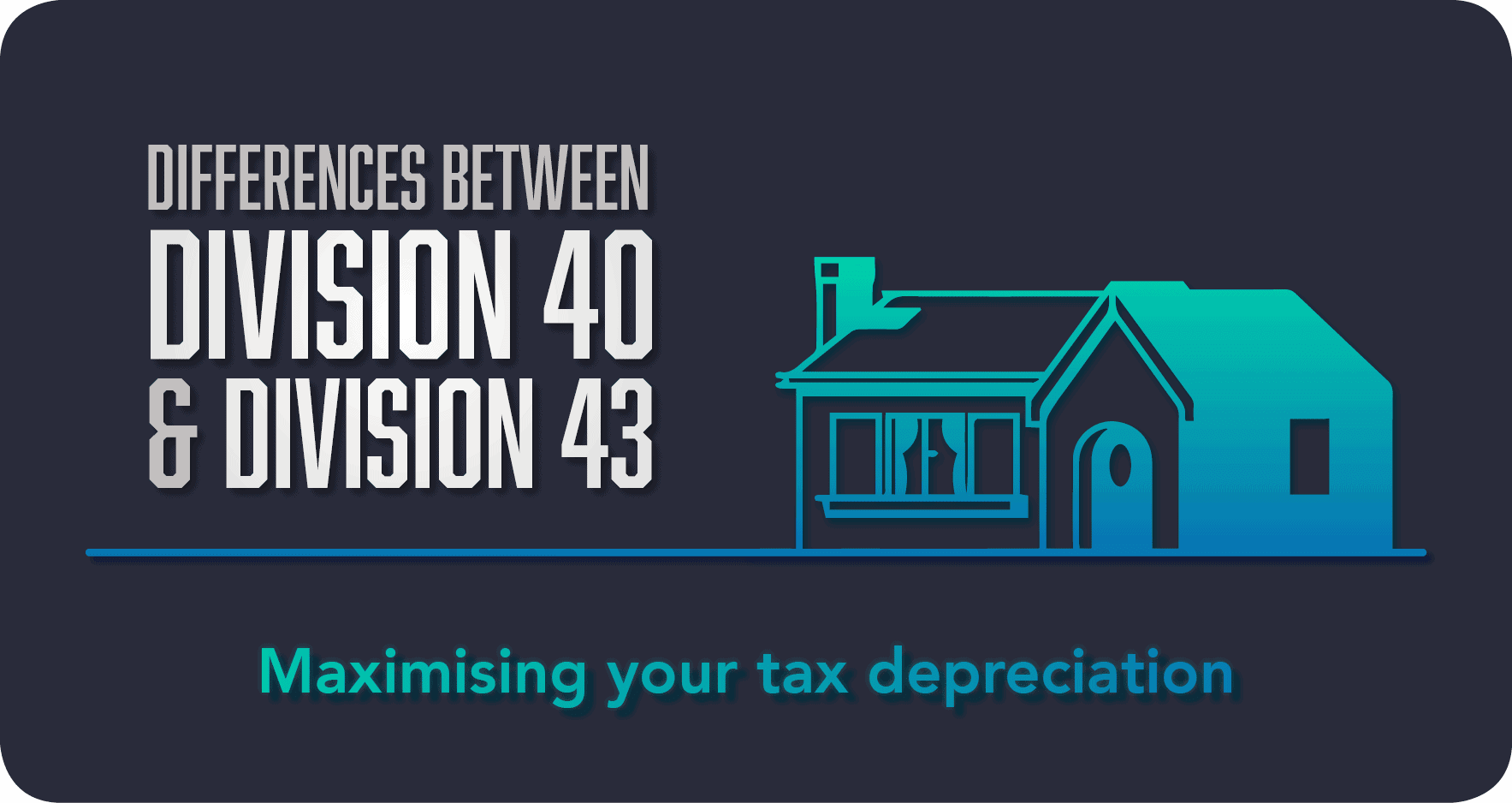Remember when you first dived into property investing and heard about capital gains tax? It seemed like a distant concern. But now that you’re considering selling your first investment property, the thought of capital gains tax slicing into your profits seems far from ideal.
Fortunately, there’s a silver lining.
In fact, there are three ways that you can (legally) avoid paying capital gains tax when selling your investment property.
And implementing these strategies can save you thousands of dollars.
So, we’ve put together an easy-to-understand guide to help ease your CGT concerns and walk you through how you can significantly reduce, or even completely avoid, your capital gains tax.
What is Capital Gains Tax (CGT)?
According to the Australian Taxation Office (ATO), when you sell your property, the difference between how much you paid for it and how much you sold it for is known as a capital gain or a capital loss.
The ATO considers any profit on the sale of your investment property a capital gain, and you’ll need to declare it on your annual income tax return.
On the other hand, if you don’t make a profit and instead lose money on the sale of your asset, the ATO will consider this a capital loss, which you’ll also need to declare on your tax return.
Note: CGT is not a separate tax, but rather considered as part of your annual income.
When Do You Have to Pay Capital Gains Tax?
Unless specific exclusions apply, CGT is typically payable when you sell a rental property that you acquired after September 20, 1985 (known as a capital gains tax event).
To put this into perspective, imagine you purchased a rental property in 1990 and decided to sell it in 2023. Upon selling, the profits you gain, also known as capital gains, must be reported in your income tax return for the corresponding financial year.
But what does this mean for you in real terms?
Consider this example: Let’s say your annual income is $80,000 and the profit from your property sale is $50,000. In this instance, for tax purposes, your total income for the year would be considered $130,000.
This is significant because the tax rate for incomes over $90,000 is 37%, compared to a lower marginal tax rate of 32.5% for incomes between $45,001 and $90,000.
Consequently, this property sale could potentially move you into a higher tax bracket, leading to a heftier income tax bill for that particular financial year.
In essence, understanding the implications of CGT can help you plan your property investments and tax payments more strategically.
This includes understanding that the ATO actually offers investors a few concessions and exemptions when it comes to paying CGT.
If you know how to take advantage of these concessions and exemptions, you could potentially save thousands on your tax bill.
How to Avoid Paying Capital Gains Tax
The following list will offer some insight into how to (legally) avoid capital gains tax when selling your investment property.
The Principle Place of Residence (or Main Residence) Exemption
As a general rule, you won’t be liable for paying CGT when selling your investment property if that property is also considered your main residence, or what the ATO refers to as your “primary place of residence (PPOR).”
This main residence exemption rule applies because you usually don’t generate an income from living in your own home. So, you won’t need to declare any profit on the sale of your home on your annual income tax return.
There are, of course, certain eligibility criteria you need to meet to satisfy the application for the exemption.
Firstly, your property must satisfy the definition of a main residence. The ATO considers a property to be your main residence if:
- The dwelling is the home where you and your family live.
- Your personal belongings are kept in the dwelling.
- It is the address to which your mail is delivered.
- It is the address registered on the electoral roll.
- Utility services such as gas and electricity are connected to the dwelling.
If your property meets the definition criteria, you may be able to claim the main residence exemption from CGT if:
- The dwelling has been your home for the entire period you’ve owned it.
- You have not used it to produce assessable income (meaning you haven’t run a business from it, rented it out, or flipped it).
- The land on which the dwelling is situated is 2 hectares or less.
Given that an investment property generates income, I’m sure you’re wondering how you can apply the main residence exemption to avoid capital gains tax.
The answer lies in the capital gains tax’s six-year rule.

How Does the CGT 6-Year Rule Apply to Your Investment Property?
The CGT 6-year rule allows you to use your main residence (or PPOR) as an investment by renting it out for a period of up to six years.
So, if you decide to sell the property within the six years, you would be exempt from paying CGT as you would if you sold the house that you primarily reside in.
The benefit of the CGT 6-year rule similarly appeals to homeowners who want to make some extra money for the time that they are not, for whatever reasons, able to stay in their home without prompting the need to pay tax upon its eventual sale.
Example
Consider the example of Samuel.
In 2016, he bought his very first home in the bustling city of Melbourne. Throughout his ownership, this home remained his primary place of residence.
Samuel enjoyed the comfort of his Melbourne home for four solid years before a career opportunity in Brisbane came calling in 2020. This new job was a two-year assignment, so Samuel temporarily resided with his sister in Brisbane, keeping his Melbourne home intact.
This decision was also influenced by the fact that Samuel did not have to declare any other property as his main residence during this time. His Melbourne home continued to hold this status despite his physical absence.
While he was away in Brisbane, Samuel decided to rent out his Melbourne home. This was a strategic move, allowing him to earn extra income while ensuring his property wasn’t vacant.
Two years flew by, and by 2022, Samuel thoroughly enjoyed the Brisbane lifestyle. He decided to make his move to Brisbane permanent.
Now, with a house in Melbourne that he no longer lived in, Samuel decided to sell it. This is where his understanding of the CGT rules came into play. He learned about the CGT 6-year rule, a provision that potentially allowed him to sell his Melbourne property without paying CGT.
This rule essentially states that if a property was your main residence before you started renting it out and sold it within six years of moving out, you could avoid paying CGT. Given that Samuel’s situation aligned with these criteria, he found a way to dodge the capital gains tax on selling his investment property.
Through the application of the CGT 6-year rule, Samuel was, thus, exempt from having to pay capital gains tax.
Can You Avoid CGT When Selling an SMSF Investment?
Self-managed superannuation funds (SMSF) have become considerably more attractive to property investors because the SMSF can now borrow money to purchase a property.
There are several tax benefits if you purchase your investment property through an SMSF. For example, the fund is only required to pay a 15% tax rate on rental income from the property.
This is substantially lower than other income tax rates in Australia.
Moreover, if you keep the property for more than twelve months, the tax rate will drop from 15% to 10%, and you will be eligible for a 33% discount on your CGT upon selling the property.
The most beneficial perk of SMSF investing is that when it’s in its pension phase, you will not be required to pay any CGT on the sale of your investment property.
If You Can’t Avoid Capital Gains Tax, You May Be Able to Reduce It
Even if your property doesn’t meet the eligibility criteria for a full investment property exemption, the ATO provides ways to reduce how much net capital gains tax you pay on the sale of your investment property.
Increasing Your Cost Base With Your Expenses To Reduce Your Capital Gain
If you’re selling an investment property and are consequently not eligible to avoid paying CGT, you may want to consider increasing your cost base through your expenses.
Remember, net capital gain = selling price minus cost base.
Your cost base = purchase price + expenses (see below) – (grants + depreciation)
The expenses that you can add to your cost base include, but are not limited to:
- Incidental Costs such as your rental advertisement fees, legal fees and stamp duty
- Ownership Costs, such as those incurred when searching and inspecting properties
- Title Costs, such as the legal fees incurred when organising and defending the title on the property
- Improvement costs should you decide to replace the flooring or install a deck, for example.
Adding expenses to your cost base can help you lower your capital gains on your income taxes.
The best way to determine what expenses you can add to your cost base and how you can reduce the number of capital gains you declare would be to have a quantity surveyor draw up a Capital Gains Report and help you calculate capital gains tax liability.

The 12-Month Ownership Partial Exemption
Let’s say you can’t claim a full exemption because your property doesn’t qualify as your main residence according to the ATO’s guidelines.
Even in such cases, strategies are still available to lessen the CGT impact of selling your property. The ATO provides certain partial exemptions that could assist in decreasing the amount of tax you’d need to pay on the capital gain from your property sale.
One particularly beneficial option is the 50% CGT discount. This rule allows you to claim a 50% reduction on your capital gains tax if you’ve held the property for at least 12 months before selling it.
For example, if you purchase an investment property in 2022 and decide to sell it in 2024, any capital gain you make could be eligible for this discount.
If the capital gain were $100,000, you only need to declare $50,000 as taxable income.
The “Years Lived In vs. Years Rented” Partial Exemption
Sometimes, an investment property might transition into your primary residence. This could occur if, for example, you initially rented out your property and later chose to move in yourself. In these cases, you’re entitled to a partial CGT exemption.
This partial exemption is proportionally calculated, taking into account the number of years the property was rented out versus the number of years it served as your PPOR.
Example
Let’s say Bianca invested in a property and initially rented it out for two years. After this period, she decided to move in and declared it her PPOR.
Fast forward eight years to 2023, when Bianca chose to sell her property. From the sale, she made a substantial capital gain of $235,500.
Given that the property was her PPOR for eight out of the ten years she owned it, Bianca is only required to pay CGT for the two years it was rented out.
We recommend getting your hands on a capital gains property valuation report.
With a valuation report, we can calculate the property’s market value from the time you start renting it out, so that when you eventually decide to sell the property, the ATO will know where to start the CGT calculation.
Key Takeaways
- Any profit made from selling a property is generally considered a capital gain and may be subject to capital gains tax.
- Understanding strategies to avoid or reduce CGT can result in significant savings.
- Owning your investment property for at least 12 months may qualify for a 50% CGT discount.
- Maintaining your property as your primary residence (PPOR), even if you’re not living in it, can help avoid CGT. Remember the 6-year rule: If you sell within six years, you may qualify for the main residence exemption.
- If avoiding CGT isn’t possible, reducing the amount is achievable
As property tax depreciation experts and seasoned property investors, our team at Duo Tax is keen to help you navigate the complexities of CGT and potentially save thousands in tax dollars.
For the best possible advice on your CGT options and to inquire about our Capital Gains Report, reach out to us today.
Let’s ensure you’re equipped with the information and resources you need to make the most informed decisions.

Ready to get started?
Talk to one of our friendly property experts to get a free quote or more Information.









